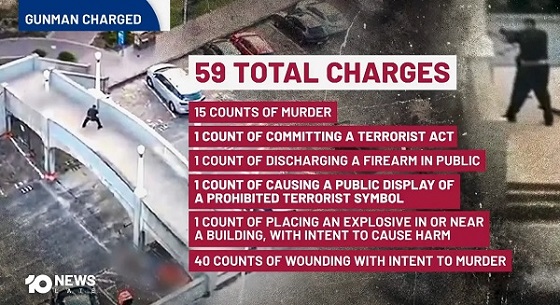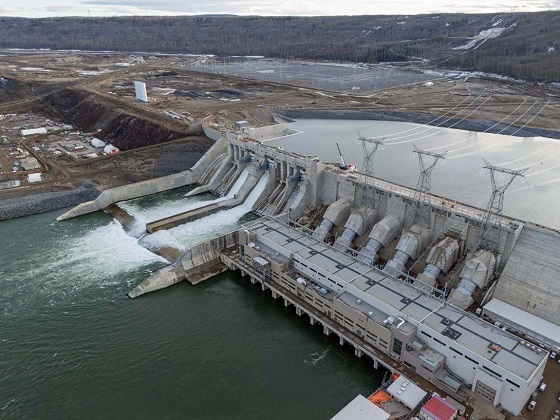Opinion
Red Deer’s Hazlett Lake is “Opportunity Lost”?
A lot of words have been written about our state of affairs in Red Deer. The fall-out from a depressed economy, being in a bust portion of a boom-bust cycle. Our declining population. Talk of diversifying our economy away from our continued reliance on the energy sector. Words are not actions, and it is worrisome. Is it fear or lack of vision that impedes us from following up on the words?
No matter how we dress it up, Red Deer is shrinking. Blame the economy, the stars or any number of reasons but it could have been different. Lethbridge is slightly bit smaller in population and area than Red Deer but Lethbridge is growing in this same economy. Lethbridge invested and is today investing in areas appealing to young families including recreational facilities. Lethbridge has a history of investing in facilities to encourage growth, education and tourism. They turned a man made slough into Henderson Lake Park and has never looked back.
Red Deer has a greater opportunity in having a real natural lake. Will Red Deer build a park? NO, they will likely plan on houses, and apartment buildings that may never get built, unless we go into a boom portion of the boom-bust cycle. This is the simplistic, easiest and safest plan with a low return on investment. It ignores the high-profile location and possibilities of the lake, but it has less risk. A wall will be built to hide the lake from Hwy 2’s traffic.
Remember, Hazlett Lake is a natural lake that covers a surface area of 0.45 km2 (0.17 mi2), has an average depth of 3 meters (10 feet). Hazlett Lake has a total shore line of 4 kilometers (2 miles). It is 108.8 acres in size. Located in the north-west sector of Red Deer.
Currently on the NADG.com website we will see a residential community around Hazlett Lake. Encompassing about 12 percent of the land north of 11A currently up for development. Phase I of probably 10 phases, will be home to 5,000 residents with the nearest high school on the other side of city on the east end. A K-8 school site to be located north-east of Hazlett Lake currently planned for a later phase.
On nadg.com:
“Hazlett Lake is a 350-acre master planned residential community located in North Red Deer at the intersection of Alberta’s busiest Highway -QE2 and Highway 11A. The community will consist of over 2000 new residential units and will be Phase 1 of Red Deer’s North of 11A Major Area Structural Plan. Additionally, this development will be the first new housing project in North Red Deer in 10 years”
So, please, the next time you drive north on Hwy 2, as you pass the Hwy 11A turnoff, look out the passenger window and check out Hazlett Lake.
That lake is part of the City of Red Deer, and is a portion of a Major Area Structure Plan north of Hwy 11A previously mentioned. So as you drive by, think of what you would like to see done with your lake.
One scenario that could compliment the lake and address the desire for a regional aquatic centre and a 50-metre pool is turning the proposed community centre on the northeast corner of the lake into a Collicutt Centre type of complex.
What is more natural than having an aquatic centre on the lake? You could have your 50-metre pool inside, a lake for scuba diving, kayaking, canoeing, paddle boating, swimming, under-water photography, fishing, sun tanning, races, to name but a few.
The winter could see skating, hockey, to complement the indoor ice rink, as well as ice-fishing and ice sculptures and sleigh rides, again, to name but a few. This would all be visible to the traffic on Hwy 2.
This Major Area Structure Plan takes in much more than a lake. It takes in about 3,000 acres of land for residential, commercial and industrial development. The potential for residential growth if maintained at 17.7 units per hectare and 2.33 residents per unit could see 20,000 new residents if the area split equally between residential, commercial and industrial users.
Collicutt Centre is the top used community venue in Red Deer. It is used by almost 60 per cent of the population. It is in the southeast corner of Red Deer and was a major impetus in the development of the southeast corner of Red Deer. Blackfalds used their new Abbey Centre as an impetus for very strong residential developments that have recently outshone Red Deer’s residential developments.
Would a regional aquatic centre built on Hazlett Lake kick-start development in Red Deer’s north at a time of a slowdown in the energy sector? Would a Hazlett Lake regional aquatic centre, visible from Hwy 2, create a tourism trade that would bolster Red Deer’s hospitality industry? Would a Hazlett Lake regional aquatic centre enhance our position as a sports destination? Would a Hazlett Lake regional aquatic centre ensure that everyone would have an opportunity to enjoy the lake? I hope so.
Then another option would be to close it off to the public, develop around it, build a private boathouse for the home owners holding passes, and build expensive homes to hide the lake from the citizens and allow developers to make huge profits.
It is up to the citizens to let the city know what they would like to see, but time is running out.
I think the Hazlett Lake is worth preserving, and I hope that when my grandchildren drive north on Hwy 2 just past the Hwy 11A turnoff, that they will be able to look out the passenger side window and see Hazlett Lake.
Perhaps they will be able to tan on a beach, watch a naturescape in action, paddle a canoe, swim, skate, maybe have a bonfire on a beach and roast a marshmallow. We do need to act now, before the plans get too entrenched in the least desired direction.
Please contact the city before it is too late.
Crime
The Uncomfortable Demographics of Islamist Bloodshed—and Why “Islamophobia” Deflection Increases the Threat


Addressing realities directly is the only path toward protecting communities, confronting extremism, and preventing further loss of life, Canadian national security expert argues.
After attacks by Islamic extremists, a familiar pattern follows. Debate erupts. Commentary and interviews flood the media. Op-eds, narratives, talking points, and competing interpretations proliferate in the immediate aftermath of bloodshed. The brief interval since the Bondi beach attack is no exception.
Many of these responses condemn the violence and call for solidarity between Muslims and non-Muslims, as well as for broader societal unity. Their core message is commendable, and I support it: extremist violence is horrific, societies must stand united, and communities most commonly targeted by Islamic extremists—Jews, Christians, non-Muslim minorities, and moderate Muslims—deserve to live in safety and be protected.
Yet many of these info-space engagements miss the mark or cater to a narrow audience of wonks. A recurring concern is that, at some point, many of these engagements suggest, infer, or outright insinuate that non-Muslims, or predominantly non-Muslim societies, are somehow expected or obligated to interpret these attacks through an Islamic or Muslim-impact lens. This framing is frequently reinforced by a familiar “not a true Muslim” narrative regarding the perpetrators, alongside warnings about the risks of Islamophobia.
These misaligned expectations collide with a number of uncomfortable but unavoidable truths. Extremist groups such as ISIS, Al-Qaeda, Hamas, Hezbollah, and decentralized attackers with no formal affiliations have repeatedly and explicitly justified their violence through interpretations of Islamic texts and Islamic history. While most Muslims reject these interpretations, it remains equally true that large, dynamic groups of Muslims worldwide do not—and that these groups are well prepared to, and regularly do, use violence to advance their version of Islam.
Islamic extremist movements do not, and did not, emerge in a vacuum. They draw from the broader Islamic context. This fact is observable, persistent, and cannot be wished or washed away, no matter how hard some may try or many may wish otherwise.
Given this reality, it follows that for most non-Muslims—many of whom do not have detailed knowledge of Islam, its internal theological debates, historical divisions, or political evolution—and for a considerable number of Muslims as well, Islamic extremist violence is perceived as connected to Islam as it manifests globally. This perception persists regardless of nuance, disclaimers, or internal distinctions within the faith and among its followers.
THE COST OF DENIAL AND DEFLECTION
Denying or deflecting from these observable connections prevents society from addressing the central issues following an Islamic extremist attack in a Western country: the fatalities and injuries, how the violence is perceived and experienced by surviving victims, how it is experienced and understood by the majority non-Muslim population, how it is interpreted by non-Muslim governments responsible for public safety, and how it is received by allied nations. Worse, refusing to confront these difficult truths—or branding legitimate concerns as Islamophobia—creates a vacuum, one readily filled by extremist voices and adversarial actors eager to poison and pollute the discussion.
Following such attacks, in addition to thinking first of the direct victims, I sympathize with my Muslim family, friends, colleagues, moderate Muslims worldwide, and Muslim victims of Islamic extremism, particularly given that anti-Muslim bigotry is a real problem they face. For Muslim victims of Islamic extremism, that bigotry constitutes a second blow they must endure. Personal sympathy, however, does not translate into an obligation to center Muslim communal concerns when they were not the targets of the attack. Nor does it impose a public obligation or override how societies can, do, or should process and respond to violence directed at them by Islamic extremists.
As it applies to the general public in Western nations, the principle is simple: there should be no expectation that non-Muslims consider Islam, inter-Islamic identity conflicts, internal theological disputes, or the broader impact on the global Muslim community, when responding to attacks carried out by Islamic extremists. That is, unless Muslims were the victims, in which case some consideration is appropriate.
Quite bluntly, non-Muslims are not required to do so and are entitled to reject and push back against any suggestion that they must or should. Pointedly, they are not Muslims, a fact far too many now seem to overlook.
The arguments presented here will be uncomfortable for many and will likely provoke polarizing discussion. Nonetheless, they articulate an important, human-centered position regarding how Islamic extremist attacks in Western nations are commonly interpreted and understood by non-Muslim majority populations.
Non-Muslims are free to give no consideration to Muslim interests at any time, particularly following an Islamic extremist attack against non-Muslims in a non-Muslim country. The sole exception is that governments retain an obligation to ensure the safety and protection of their Muslim citizens, who face real and heightened threats during these periods. This does not suggest that non-Muslims cannot consider Muslim community members; it simply affirms that they are under no obligation to do so.
The impulse for Muslims to distance moderate Muslims and Islam from extremist attacks—such as the targeting of Jews in Australia or foiled Christmas market plots in Poland and Germany—is understandable.
Muslims do so to protect their own interests, the interests of fellow Muslims, and the reputation of Islam itself. Yet this impulse frequently collapses into the “No True Scotsman” fallacy, pointing to peaceful Muslims as the baseline while asserting that the attackers were not “true Muslims.”
Such claims oversimplify the reality of Islam as it manifests globally and fail to address the legitimate political and social consequences that follow Islamic extremist attacks in predominantly non-Muslim Western societies. These deflections frequently produce unintended effects, such as strengthening anti-Muslim extremist sentiments and movements and undermining efforts to diminish them.
The central issue for public discourse after an Islamic extremist attack is not debating whether the perpetrators were “true” or “false” Muslims, nor assessing downstream impacts on Muslim communities—unless they were the targets.
It is a societal effort to understand why radical ideologies continue to emerge from varying—yet often overlapping—interpretations of Islam, how political struggles within the Muslim world contribute to these ideologies, and how non-Muslim-majority Western countries can realistically and effectively confront and mitigate threats related to Islamic extremism before the next attack occurs and more non-Muslim and Muslim lives are lost.
Addressing these realities directly is the only path toward protecting communities, confronting extremism, and preventing further loss of life.
Ian Bradbury, a global security specialist with over 25 years experience, transitioned from Defence and NatSec roles to found Terra Nova Strategic Management (2009) and 1NAEF (2014). A TEDx, UN, NATO, and Parliament speaker, he focuses on terrorism, hybrid warfare, conflict aid, stability operations, and geo-strategy.
The Bureau is a reader-supported publication.
To receive new posts and support my work, consider becoming a free or paid subscriber.
International
Bondi Beach Shows Why Self-Defense Is a Vital Right

By
Individuals and communities must take responsibility for their own safety.
|
||||||||||||||||||||||||||||||||||||||||||||||||||
|
|
||||||||||||||||||||||||||||||||||||||||||||||||||
|
||||||||||||||||||||||||||||||||||||||||||||||||||
|
||||||||||||||||||||||||||||||||||||||||||||||||||
|
||||||||||||||||||||||||||||||||||||||||||||||||||
|
||||||||||||||||||||||||||||||||||||||||||||||||||
|
||||||||||||||||||||||||||||||||||||||||||||||||||
|
||||||||||||||||||||||||||||||||||||||||||||||||||
|
||||||||||||||||||||||||||||||||||||||||||||||||||
|
||||||||||||||||||||||||||||||||||||||||||||||||||
|
||||||||||||||||||||||||||||||||||||||||||||||||||
|
||||||||||||||||||||||||||||||||||||||||||||||||||
-

 Digital ID2 days ago
Digital ID2 days agoCanada releases new digital ID app for personal documents despite privacy concerns
-

 Community1 day ago
Community1 day agoCharitable giving on the decline in Canada
-

 Bruce Dowbiggin2 days ago
Bruce Dowbiggin2 days agoNFL Ice Bowls Turn Down The Thermostat on Climate Change Hysteria
-

 Energy2 days ago
Energy2 days agoCanada’s sudden rediscovery of energy ambition has been greeted with a familiar charge: hypocrisy
-

 Crime2 days ago
Crime2 days agoTrump designates fentanyl a ‘weapon of mass destruction’
-

 Energy2 days ago
Energy2 days agoCan we not be hysterical about AI and energy usage?
-

 Energy2 days ago
Energy2 days agoEnergy security matters more than political rhetoric
-

 Alberta1 day ago
Alberta1 day agoCanada’s New Green Deal








